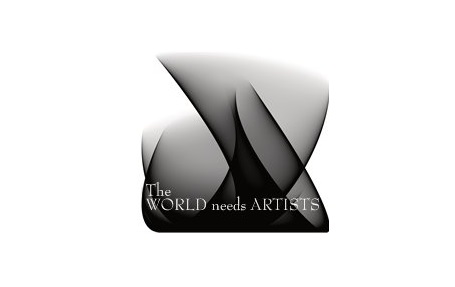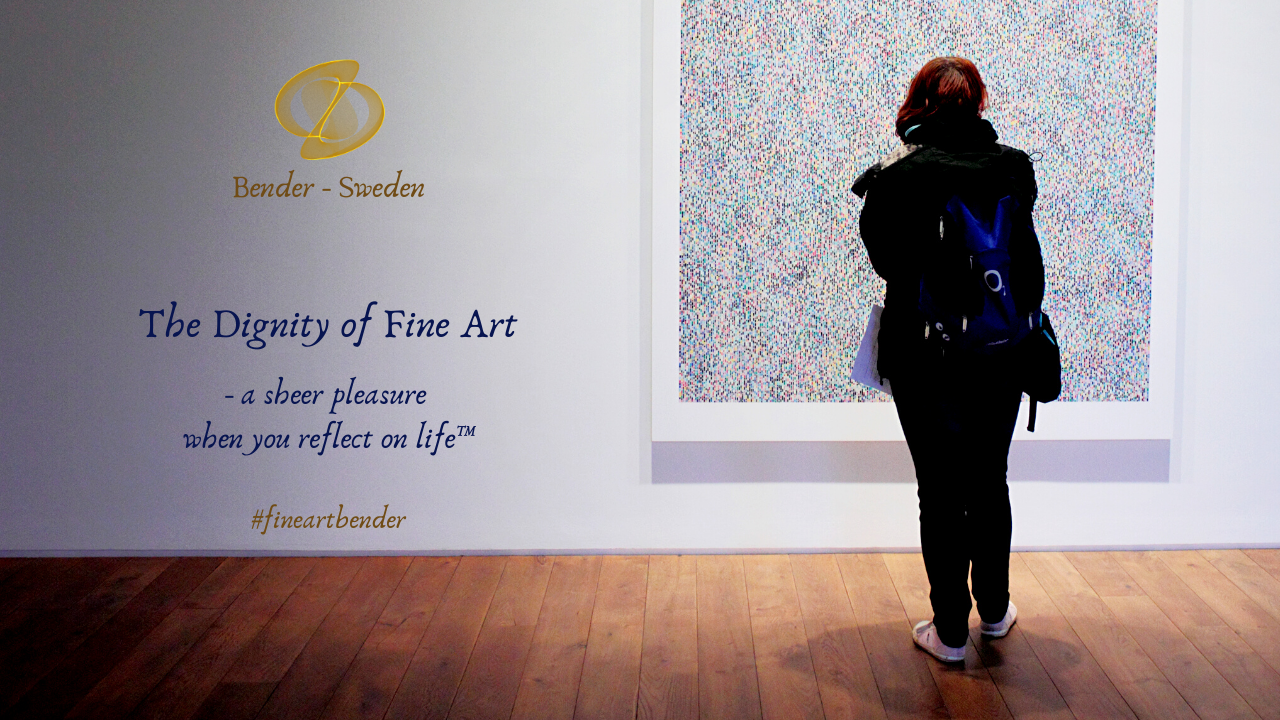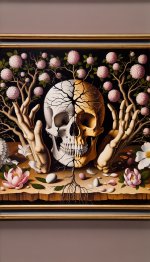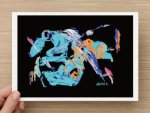This Is Why The World Needs Artists

This Is Why The World Needs Artists
by Jane Claire Hervey
Woman@Forbes
These days, carving out a career in a creative industry requires both an artistic perspective, technical skill and an entrepreneurial spirit. Statistically speaking, more and more of us are becoming freelancers (some studies even predict freelancers will become the majority of our workforce in a decade). That means we're cobbling together a living from different clients, projects and revenue streams. That means we're managing our own time, selling products, soliciting services and doing all we can to pay the bills.
But what does this changing landscape mean for the creative world? What does it mean for an industry when pathways to economic stability and successful careers aren't clear? The answers are muddy and vary across profession. (If you've been keeping up with this column at all, you know what I mean.)
So, this week, I'm deep-diving into creative sustainability within the art world through the eyes of Sharon Louden. Louden is an artist, author and arts advocate, and I recently had the pleasure of working with her during the Austin stop of her book tour for "Artist as Culture Producer: Living and Sustaining a Creative Life.” As part of a larger body of work, "Artist as Culture Producer" explores the different ways modern-day artists make ends meet. In the book, Louden shares essays by 40 creative professionals, each diligently producing personal and community-oriented work. From the development of creative communities in the desert to creating artist residencies that are particularly conducive for motherhood, every artist's story is a testament to resilience and a demonstration of the resourcefulness required to navigate the industry today.
On top of practical career advice, the book also argues for the value an artist's place within our communities. The publication paints artists as producers of culture, creative problem-solvers and hope for a better world. After participating in a public dialogue about Louden's work and reading the essays, I'd have to say I agree. If artists are at the forefront of community-building, critical thinking and cultural production, we could sure use a lot more.
To explore these sentiments, Louden and I hopped on the phone to chat about the books overarching mission and theme, as well as what it means to be an artist in the 21st Century. Read the full interview below.
Jane Claire Hervey: Basic, simple question—who are you and what do you do?
Sharon Louden: I’m an artist, an advocate for artists and editor of a series of books that hopefully empowers and informs who artists are today. The series so far includes “Living and Sustaining a Creative Life: Essays by 40 Working Artists,” and “Artist as Culture Producer: Living and Sustaining a Creative Life.”
Hervey: Let’s start with your latest book, which is part of a larger series. To provide a little context for this column, can you explain what led to the creation of this book and why you took on the project?
Louden: I was approached to write a book by my publisher but told them that I wasn’t comfortable writing a book. I can’t even write an artist statement, and so I decided when looking around at all of the books on the bookshelves right now for artists that there wasn’t one that really shared how artists sustained their lives. So, I asked 40 people to start a conversation about how they sustain their lives, and then it just went out into the world and its now in its seventh printing. It continues to inform and inspire artists and it demonstrates what it’s like to really be an artist today. I’m trying to show how artists have relevance and are agents of change. I want to demonstrate our value.
Hervey: Were you surprised by the interviews you gathered in the book?
Louden: I wasn’t surprised. The responses to the book, though—both of them—have been very interesting. I’m more surprised at how traditional artists think of the art world, and I’m also saddened that the general public still thinks that artists are just like Vincent Van Gogh, but Van Gogh died in 1890. The mystique of an artist still exists in people’s minds. The mystique of the art world still exists in artists’ minds, so, by revealing truth, I’m hoping that we can change those perceptions and therefore empower ourselves as artists and become more visible to the public.
Hervey: Does community and visibility devalue art—by dismantling the myths that are perceived to add value?
Louden: Absolutely not. I know this for a fact by visiting many, many cities on both tours and meeting thousands of people—most of who are artists. Artists need to share resources, opportunities and validation. More visibility means more value in this case. Artists have been stereotyped as being in a hole, in a cave, and that we never come out unless we have an exhibition and then we go back into our hole—I just don’t believe in that anymore. I think that’s just one part of the ecosystem. There’s no such thing as an artist hero. We’re integral to society and contribute to the creative economy.
We contribute to the wellbeing of others. All of the essays in my second book address this so-called mystique about artists and art-making. I’m revealing these artists’ stories, so I’m already debunking these myths. The second thing I would say is that by debunking these myths, none of these artists have lost any of their value. In most cases, they’ve increased. In this day and age, when truth is very important and precious (why truth-seeking is not just normal is ridiculous in and of itself), we as artists need more than ever to live in truth. We can create myths for ourselves if it’s purposeful to the creative realm, but otherwise I don’t see what the value of that is.
Hervey: Do you believe there are misconceptions that keep the “starving artist” stereotype alive? If so, what are they?
Louden: Artists are still being held to one system. So when artists are held to one system, as in the gallery system as the only silo, then we’re held to an old standard. I think there are many different ways to sustain a creative life, and I think sometimes artists don’t know that they can create opportunities themselves.
Hervey: Not all entrepreneurs are artists, but all artists are entrepreneurs. Would you agree with that statement? Why or why not?
Louden: I think artists have an entrepreneurial spirit, but the ultimate goal of entrepreneurship is to maximize profits—solely to profit—and we do a lot more than that. We have the spirit, and I do think that in large measure we are small businesses, but we’re a lot more than that. We’re just not held to our work being sold as a way to sustain our own lives. I believe that artists do a lot of different things to sustain their lives, but also, then it gets down to, “What is the definition of an artist?” There are a lot of artists who do installations, work with different media, so when you’re thinking about someone that’s creating work outside of the for-profit system, are they entrepreneurial? Sure. But just because someone sells their work does not mean they’re an entrepreneur. But the spirit? Yeah. Artists can bounce back from failure like no one else can. We’ve been doing this for centuries. We can start an idea from nothing. We can look at things from many different views. And, sure, those things can yield to entrepreneurship, but it’s not solely ever just for profit.
Hervey: You use the term "culture producer" throughout your books. How would you define that term and why do you use it?
Louden: All events on my tours are open to the public, and during my first tour, when I would introduce somebody as a culture producer, they would be like “Who is that? What is a culture producer?” But when I would introduce them as an artist, they would be like “Oh, god—another artist.” So, that kind of response made me think. An artist is and has always been a producer of culture, so for the book itself, a culture producer is someone who not only has a leg in the art world but also creates bridges to the public.

Back from This is why the world needs artists to
Site Map

Heritage & Future
Each part of each piece of art is created by Award-winning artist Bender. Creation continues passionately with new discoveries every day, with the ambition and aspiration of the history and culture of Swedish soil and roots of the name that can be traced to the 1883, - for the future.
Nothing is more powerful
than an idea whose time has come.
- Victor Hugo -


